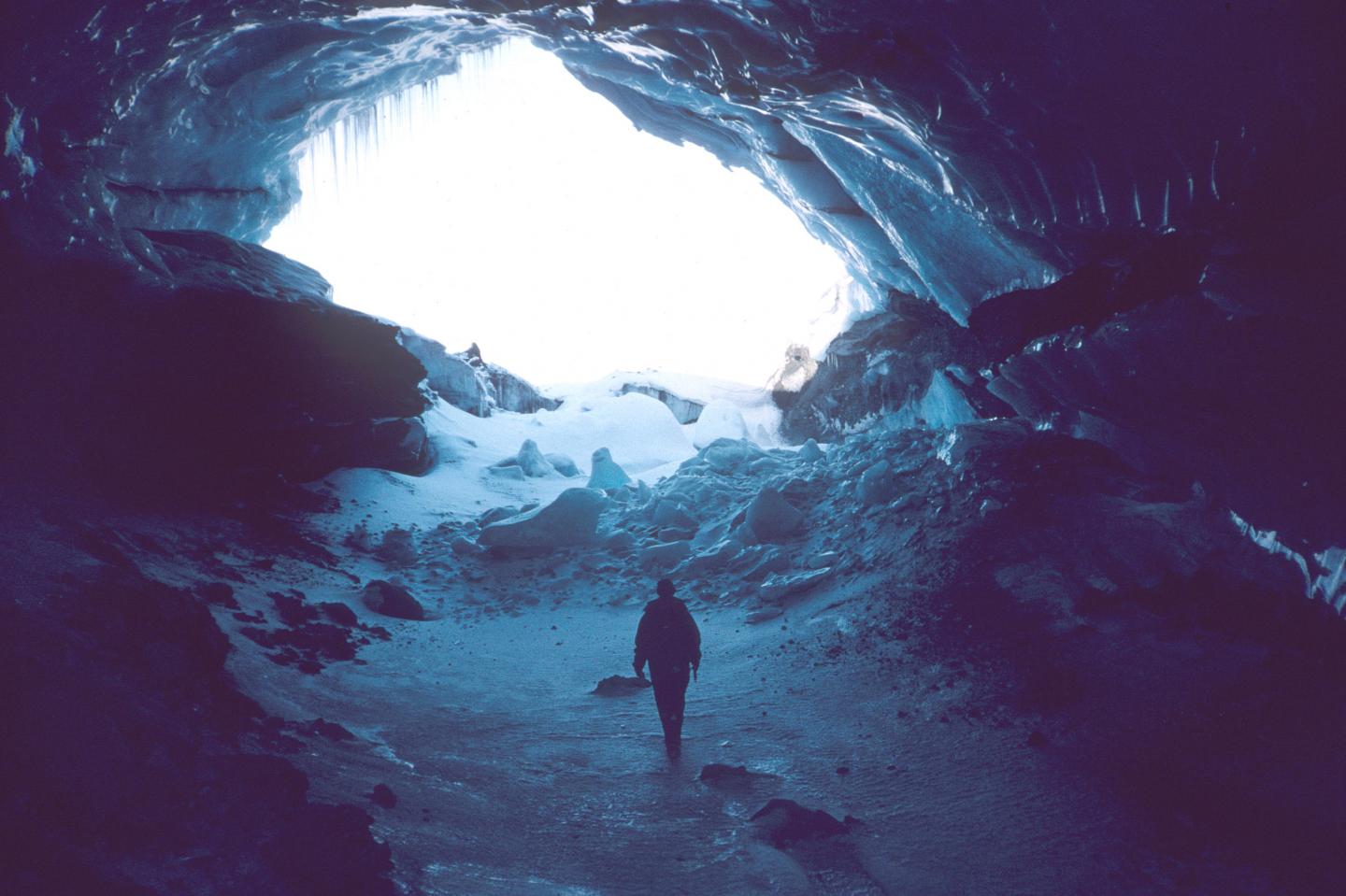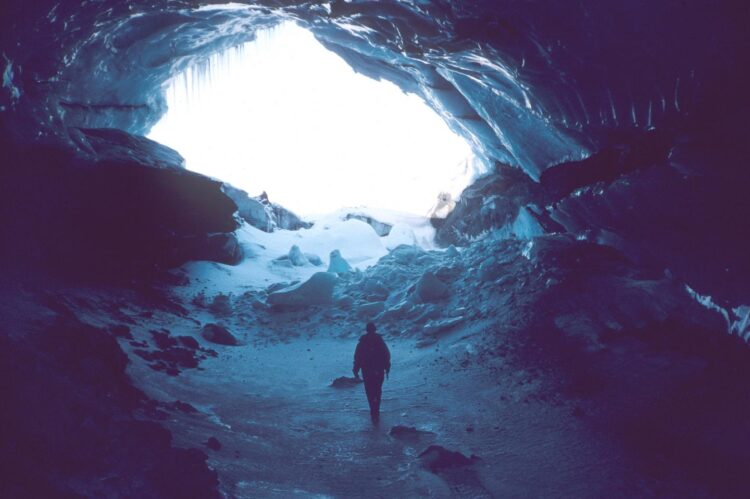
Credit: Jon Ove Hagen
The catastrophe Wadham is seeing unfold is the rapid melting and demise of our planet’s glaciers. A demise that will cause global humanitarian crises, if not halted: 70 per cent of fresh water on Earth is locked up in glaciers. As glaciers melt, due to normal seasonal variations, they supply water to millions of people in the high mountains. But this source will slowly diminish as glaciers shrink irrevocably due to global warming, says Wadham.
Mountain glaciers and the Greenland and Antarctic Ice Sheets are melting at accelerating rates and in some cases exceeding what most alarming predictions could foresee. But this will have impacts beyond rising sea levels, involving shifts in ocean food webs, fisheries, and potentially the release of the potent greenhouse gas methane from the guts of ice sheets, all with impacts on Earth’s carbon cycle.
Jemma Wadham is one of the world’s foremost experts in glaciology, the scientific study of everything ice. She has spent 25 years researching the majestic but dwindling ice covers – from glaciers in fiords of Svalbard archipelago in Arctic Norway, to Antarctic giants.
An urgency brought upon by illness
Many high profile scientific publications resulted from this dangerous labour, informing the scientific community of the state of the natural world facing global warming.
But it was a growth in her brain that provided an added sense of urgency for Wadham, and a need to communicate her knowledge to a much broader audience: In 2018, while on her way home from fieldwork in South America, she blacked out feeling excruciating pain in her head. Emergency surgery revealed a benign cyst, the size of a tangerine, which was removed from her head. Even though the growth was non-cancerous, it was life-threatening. When faced with their mortality, people often adjust and focus on their perspectives.
Jemma Wadham’s focus turned to communicate cutting edge science to the public with a deeply felt personal hope that it would inform good decisions to be made for our planet’s future.
“Every fraction of degree which we manage to not warm the atmosphere can make a difference for our glaciers and the benefits they provide to us,” she says.
Wadham decided to write a book of memoirs. Ice Rivers, a personal and passionate recollection of her own life and relationship with glaciers, released by Penguin on May 6th. The manuscript took only seven weeks to draft and is both an inspiring, humorous, and ambitious book.
“I was fascinated by ice”
About her decision to do her PhD on Svalbard, Wadham writes: “I remember some family members being rather suspicious when I announced that I would be embarking on a three-year doctorate on glaciers: ‘Why on Earth would you want to be stuck in the freezing Arctic on top of a block of ice? You hate the cold!’ (Fair point – I do.) ‘And is that really a fitting career path for a woman, among all those men?’ Yet to become a glaciologist was almost an instinctive choice to me – I loved the wilderness and freely roaming mountains, I was fascinated by ice, and my ambitions to date had been to become a farmer, an agricultural mechanic or a forest ranger – none of which had gone down very well. My school had refused me work experience in the sixth form because they didn’t regard farming as a respectable career for a girl; while other pupils swanned off to swanky offices in London, I’d simply stayed at home, a misfit with limited prospects. When the University of Bristol offered me a PhD place to study glaciers in the High Arctic, I was elated – maybe there was hope for me after all.”
Jemma Wadham is currently the director at the renowned Cabot Institute for the Environment at the University of Bristol and adjunct professor at CAG Centre for Arctic Gas Hydrate, Environment and Climate. But she has always been fascinated by “what lay ‘North” and is soon shifting her main focus from the UK to become a full-time professor at CAGE’s home institution, UiT the Arctic University of Norway in Tromsø.
New frontiers in the Arctic
She fell in love with the mountainous island of Kvaløya during visits to the Arctic city of Tromsø over many years, but her primary motivation is yet again to push the frontiers of our understanding of the glaciers.
“In 2015, we found that rivers issuing from the margin of the Greenland ice sheet were supersaturated with the gas. High concentrations have also been found in other glacier rivers, a subglacial lake in West Antarctica and even the dirty layers of ice cores. In deep parts of ice sheets, we worry that methane might be stored in its solid form, methane hydrate. As climate change thins ice sheets, this could be released as gas.”
“The jury is still out on whether glacier methane is a whiff of something small or something world-changing for our climate, but, regardless, we need to find out if we are going to halt global warming.”
###
In her future work at UiT Wadham will focus on climate change impacts on the many complex connections between glaciers, ice sheets and Earth’s carbon cycle, from methane in their hidden depths to food webs that receive meltwater from ice edges. She is currently proposing – with colleagues from CAGE and Norwegian Polar Institute – to establish a new Centre of Excellence to pioneer this cutting-edge work.
Jemma Wadham will be the first Professor of Glaciology at the UiT The Arctic University of Norway. The position at the Department of Geosciences is jointly funded by the UiT and the Norwegian Polar Institute.
Media Contact
Jemma Wadham
[email protected]
Original Source
https:/





